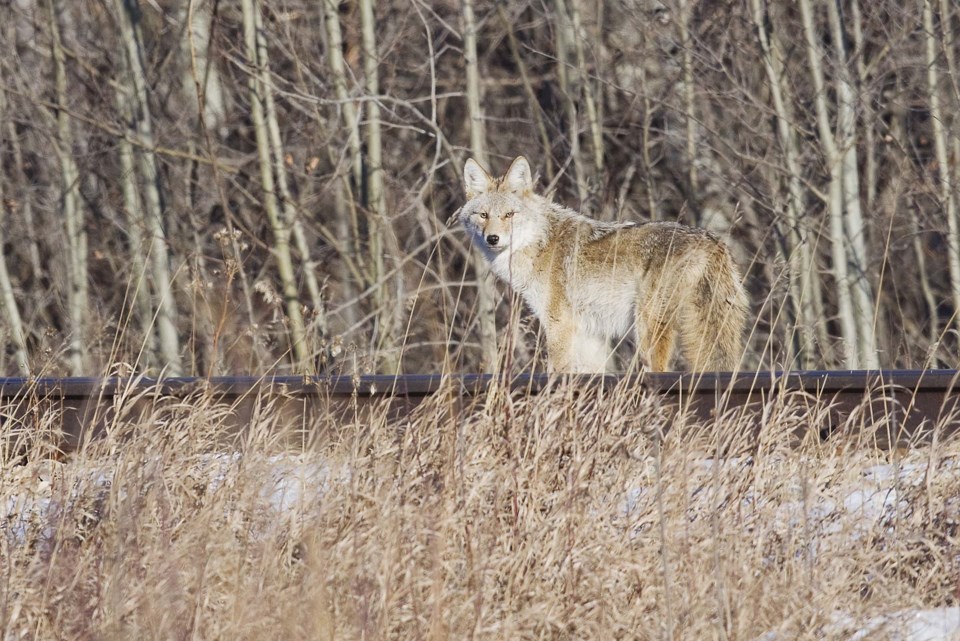St. Albert and Sturgeon County residents can tune into a free online talk this week to learn about coyotes.
The City of St. Albert and Sturgeon County kick off the Wild About Wildlife series Sept. 27 at 7 p.m. The series aims to teach residents about common wild animals they may encounter in their neighbourhood.
City and county officials have received many questions about coyotes over the years, and decided to bring in University of Alberta coyote expert Colleen Cassady St. Clair to dispel some myths about them, Logan said. This snowballed into a three-part series where officials would call in experts to give free online talks on urban wildlife.
Logan said guests at the talks can ask experts questions about urban wildlife. The talks will be archived on the City of St. Albert’s YouTube page.
Coyote chat
St. Clair is a biologist and founder of the Edmonton Urban Coyote Project, which has studied coyotes in the Edmonton region since 2009. Her Sept. 27 talk focused on coyote biology, safety, and coyote-proofing properties.
Coyotes are canines which weigh nine to 23 kilograms and stretch 120 to 150 centimetres long, up to 40 cm of which is tail, reports Hinterland Who’s Who. They have wide, pointed, erect ears, a black nose, a long tongue which often hangs between their long, pointy teeth, and yellow, narrow eyes that give them a cunning look.
Coyotes have been hanging around humans seemingly forever, as evident in the many Indigenous stories about them, St. Clair said in an email. She estimated that there are between 500 to 1,000 coyotes in Edmonton.
“Coyotes thrive in cities because there is a lot of food, no predators, and little persecution by people,” St. Clair said.
Coyotes are rarely a threat to people or pets unless they are habituated to eating human food sources such as garbage, compost, fallen fruit, or birdseed, she continued. Coyotes used to such foods become bolder and more likely to attack pets. Coyotes are very defensive of their dens, but coyotes that “follow” people are typically “escorting” them out of their territory rather than plotting to attack.
St. Clair said residents can typically just stop and enjoy the sight of a coyote if they see one from a distance. If a coyote approaches you or your pet or lets you get within 40 metres of it, shout and throw objects at it to teach it to fear humans. Owners should protect pets from coyotes by keeping dogs on leash and cats indoors.
Any coyotes we kill in St. Albert are simply replaced by more moving in to replace them, Logan said. Instead, the city works with residents to coyote-proof their properties by installing gates, closing holes under decks, and cleaning up fallen fruit and birdseed.
“This is their natural environment, and we are actually invading their home as we expand the city,” Logan noted.
“(Coyotes) are a natural part of the environment in Alberta and they’re something we have to learn to live with.”
Logan said Wild About Wildlife will continue Nov. 8 with a talk on moose, muskrats, and rabbits. The final talk, on beavers, will happen sometime next spring.
Questions on Wild About Wildlife should go to [email protected].




